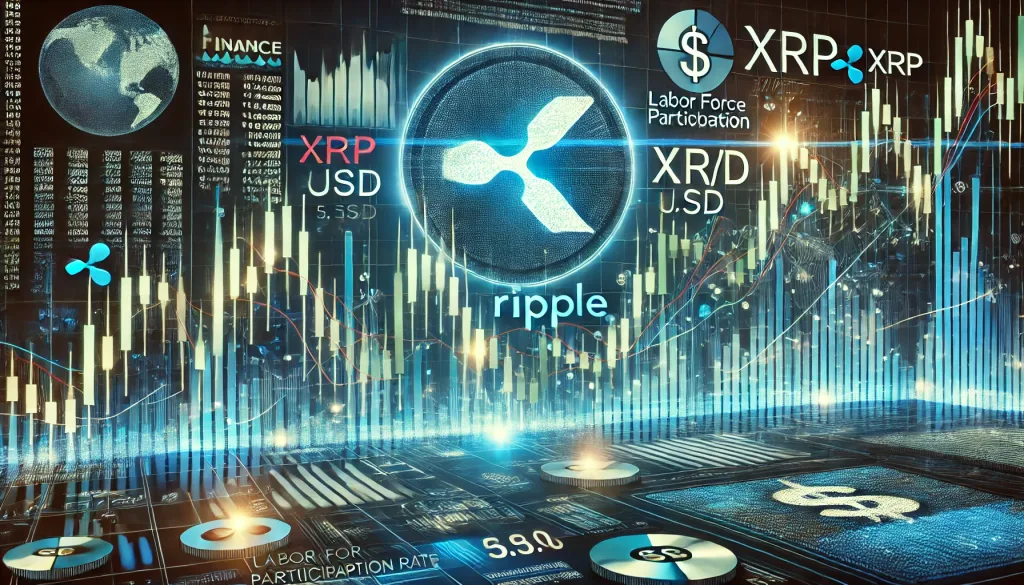Ripple vs. the US Dollar: A Hidden Battlefield in Forex Trading

The Labor Force Participation Rate Secretly Controls Ripple’s USD Moves (And You Probably Didn’t Know It)
If you think Ripple (XRP) versus the US Dollar (USD) is just another crypto-to-fiat battle, think again. Beneath the surface, labor force participation rates are quietly dictating market momentum. Sounds wild? That’s because it is. But once you understand this hidden connection, you’ll have an edge that most traders overlook.
Let’s dive into why the labor force participation rate (LFPR) is the underground indicator moving Ripple’s value and how you can capitalize on this next-level insight.
Ripple’s Tug-of-War with the USD: It’s Not Just About Supply and Demand
Most traders analyze XRP/USD movements using technical indicators, supply/demand models, and regulatory news. But what if I told you that the broader US economic conditions—specifically labor force participation—play a massive role?
Here’s why:
- Labor Force Participation Rate Affects USD Strength – A rising LFPR signals economic confidence, which strengthens the USD. When that happens, XRP/USD typically weakens because the USD dominates.
- A Declining LFPR Could Propel Ripple – A shrinking workforce signals economic slowdown, pushing investors into alternative assets, including cryptocurrencies like Ripple.
- Institutional Sentiment Hinges on Macroeconomic Indicators – While retail traders focus on charts, institutional traders move billions based on hidden macro forces like employment data.
So next time you check an XRP/USD chart, don’t just stare at candlesticks—check the labor force participation rate too.
The Hidden Ripple Trading Formula: Labor Data + Institutional Sentiment
Most traders are familiar with Non-Farm Payrolls (NFP), but fewer pay attention to labor force participation. Here’s how you can leverage this hidden metric for Ripple/USD trading:
- Step 1: Track Monthly LFPR Reports
- The US Bureau of Labor Statistics (BLS) releases labor force participation rates on the first Friday of each month.
- Compare trends: Is the participation rate increasing or decreasing? A falling LFPR can weaken the USD, potentially boosting XRP/USD.
- Step 2: Analyze Institutional Flow Post-Labor Reports
- Observe how major funds and whales react post-labor data release.
- Institutions often shift towards high-volatility assets like crypto when employment data disappoints.
- Step 3: Execute Your Trade Based on USD Sentiment
- If LFPR declines, expect potential Ripple strength.
- If LFPR increases, anticipate a stronger USD, which may drive XRP/USD downward.
By tracking these non-traditional economic indicators, you’ll spot trends before the average trader even realizes what’s happening.
Why Most Traders Get It Wrong (And How You Can Avoid It)
Many traders ignore labor force data, assuming it only impacts traditional markets. That’s a fatal mistake.
Here’s why ignoring LFPR could cost you trades:
- Ripple is heavily influenced by USD strength. Anything affecting the dollar also impacts XRP/USD.
- Labor force participation signals long-term economic health, which can shift institutional sentiment towards or away from riskier assets like Ripple.
- Unlike price-based indicators (RSI, MACD), labor force data predicts future moves rather than reacting to them.
The real winners in XRP/USD trading aren’t just reading charts—they’re tracking economic indicators that move the market.
Bonus: A Ninja Tactic for Maximizing XRP/USD Profits
Now that you know LFPR is a game-changer, here’s a little-known ninja tactic to amplify your trades:
“The Economic Event Ripple Play”
- Step 1: Identify High-Impact Economic Events – Track upcoming employment reports, inflation data, and Federal Reserve speeches.
- Step 2: Monitor Ripple’s Correlation with USD – Watch how XRP/USD reacts before and after major data releases.
- Step 3: Place Contrarian Trades – If markets overreact to employment data, look for snap-back trades when sentiment normalizes.
This contrarian approach lets you buy dips and sell spikes while the rest of the market chases headlines.
Final Thoughts: Are You Ready to Trade XRP/USD Like a Pro?
If you’ve only been trading Ripple based on price action, you’ve been missing out on a massive advantage. Labor force participation rate isn’t just an economic number—it’s a secret weapon for forecasting XRP/USD moves.
Key Takeaways:
✔️ Labor force participation directly impacts USD strength, which in turn affects XRP/USD.
✔️ Institutional traders track economic data, making it crucial for crypto traders to follow suit.
✔️ Using LFPR as a leading indicator gives you a strategic edge.
✔️ Contrarian trading during economic events can maximize profits.
Want real-time updates on economic data and how it impacts XRP/USD?
Check out our latest Forex insights at https://starseedfx.com/forex-news-today/
—————–
Image Credits: Cover image at the top is AI-generated
PLEASE NOTE: This is not trading advice. It is educational content. Markets are influenced by numerous factors, and their reactions can vary each time.

Anne Durrell & Mo
About the Author
Anne Durrell (aka Anne Abouzeid), a former teacher, has a unique talent for transforming complex Forex concepts into something easy, accessible, and even fun. With a blend of humor and in-depth market insight, Anne makes learning about Forex both enlightening and entertaining. She began her trading journey alongside her husband, Mohamed Abouzeid, and they have now been trading full-time for over 12 years.
Anne loves writing and sharing her expertise. For those new to trading, she provides a variety of free forex courses on StarseedFX. If you enjoy the content and want to support her work, consider joining The StarseedFX Community, where you will get daily market insights and trading alerts.
Share This Articles
Recent Articles
The GBP/NZD Magic Trick: How Genetic Algorithms Can Transform Your Forex Strategy
The British Pound-New Zealand Dollar: Genetic Algorithms and the Hidden Forces Shaping Currency Pairs
Chande Momentum Oscillator Hack for AUD/JPY
The Forgotten Momentum Trick That’s Quietly Dominating AUD/JPY Why Most Traders Miss the Signal
Bearish Market Hack HFT Firms Hope You’ll Never Learn
The One Bearish Market Hack High Frequency Traders Don't Want You to Know The

